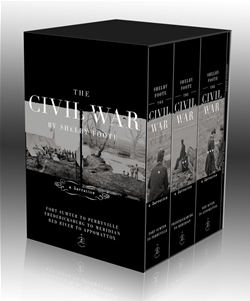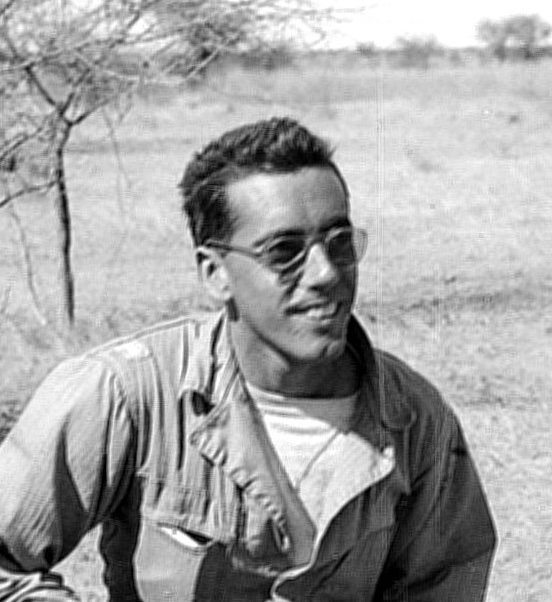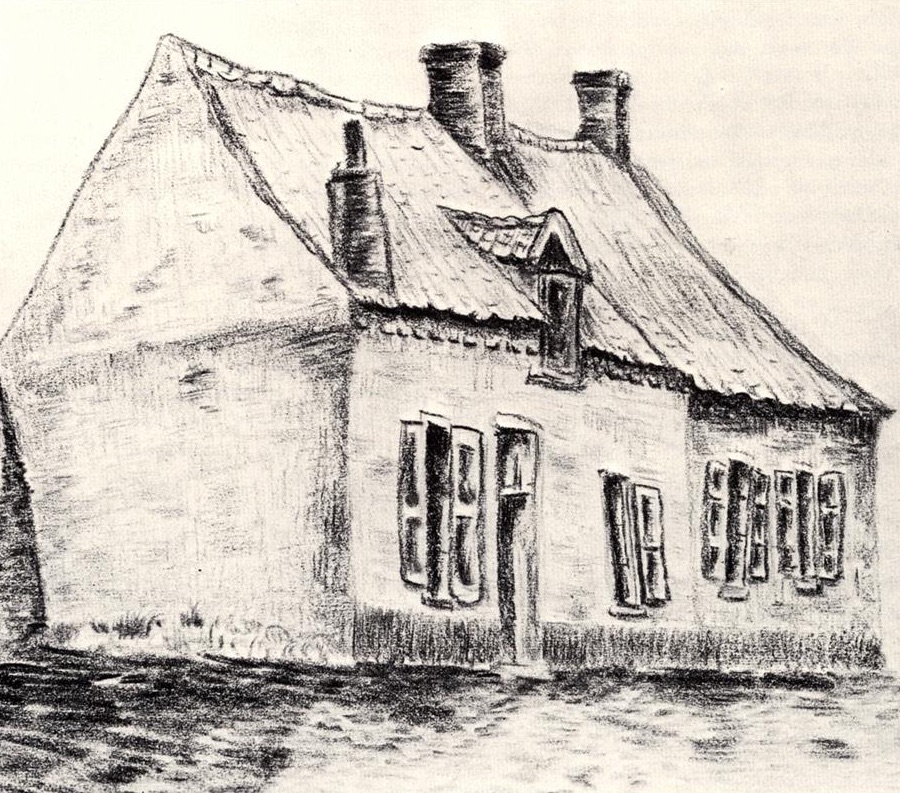American Homer
For Clay Risen, Shelby Foote’s three-volume history of the Civil War is this nation’s Iliad
According to historians’ lore, an average of a book a day has been published on the Civil War since the conflict ended. To save you the trouble of doing the math at home, that’s more than 53,650 volumes. Most of them are forgettable, a few dozen are classics, but only three have achieved something close to historical transcendence: Shelby Foote’s three-volume The Civil War, which he published between 1958 and 1974. Though rarely read—at 1.5 million words, who has the time?—it is still widely respected, if less among academic historians than the general public, for whom Foote remains “America’s Homer.”
Like his putative Greek forerunner, Foote was not a trained historian but a master storyteller. He wrote four well-received novels before embarking on The Civil War, including Shiloh, a fictional account of the 1862 battle. Long after completing the trilogy, he continued to think of himself first and foremost as a fiction writer; he said in a 1997 interview in The Paris Review, “I think of myself as a novelist who wrote a three-volume history of the Civil War. I don’t think it’s a novel, but I think it’s certainly by a novelist.”
Indeed, part of the books’ enduring appeal is that while taken together they weigh more than a six-month-old child, they read like a well-wrought, sprawling novel; not for nothing did Foote worship at the altar of the great nineteenth-century Russian writers. “There is no great difference between writing novels and writing histories,” he said. But Foote’s literary background also explains why his books exist in the first place: only a novelist could gather the vision and gumption to attempt writing them.
 Academic historians, particularly Americans and particularly since the end of World War II, tend not to attempt the grand narrative, and they snicker at those who do. Foote was derided by such professionals for omitting footnotes and for relying on narrative, rather than argument, to drive his work. He didn’t hesitate to snicker back at the Ivory Tower for the exact same reasons. “There are those historians who, I’m afraid, all too often think that good writing gets in the way of the history,” he said in the 1997 interview. “It is as if they thought it an onerous waste of time, which they might better spend doing research rather than learning how to write. The result sometimes is a prose that’s so dismal that the footnotes are not an interruption but just a welcome relief.”
Academic historians, particularly Americans and particularly since the end of World War II, tend not to attempt the grand narrative, and they snicker at those who do. Foote was derided by such professionals for omitting footnotes and for relying on narrative, rather than argument, to drive his work. He didn’t hesitate to snicker back at the Ivory Tower for the exact same reasons. “There are those historians who, I’m afraid, all too often think that good writing gets in the way of the history,” he said in the 1997 interview. “It is as if they thought it an onerous waste of time, which they might better spend doing research rather than learning how to write. The result sometimes is a prose that’s so dismal that the footnotes are not an interruption but just a welcome relief.”
Not only can academic historians not write, Foote believed; they lack a sense of broad perspective of the story—what novelists call the narrative arc. Indeed, the very idea of “story” is often dismissed by academics because it undermines the vital notion of contingency: if we look for tropes like tragedy and comedy in real events, they argue, we can lose sight of the fact that anything can happen at any time.
Foote wasn’t so arrogant as to dismiss the trained historian’s worldview: “I’m enormously indebted to these fact-gatherers, these perceivers of scenes, these perpetrators of scenes.” But he refused to believe that their work was the limit of what the historical perspective could do, or what history was meant to bring to society. History to him was a humanistic study in the purest sense: it exists to improve our lives, to give us cause to reflect and learn. Like Herodotus, Foote believed that the purpose of history was to record “the great and marvelous deeds of men” as inspiration to future generations.
 There is any number of shortcomings to this approach, and many of them are on display in The Civil War. While it makes for some fantastic stories, Foote’s “great man” theory of history can’t account for the forces beyond the individual that also drive history, like economics and political movements. At the same time, it obscures the lives of ordinary people whose stories also help us make sense of history, even if their names don’t appear in books. And an emphasis on narrative continuity papers over the fact that life is not, in fact, a story with a beginning, middle, and end, but rather a muddy puddle that clouds as much as it clarifies.
There is any number of shortcomings to this approach, and many of them are on display in The Civil War. While it makes for some fantastic stories, Foote’s “great man” theory of history can’t account for the forces beyond the individual that also drive history, like economics and political movements. At the same time, it obscures the lives of ordinary people whose stories also help us make sense of history, even if their names don’t appear in books. And an emphasis on narrative continuity papers over the fact that life is not, in fact, a story with a beginning, middle, and end, but rather a muddy puddle that clouds as much as it clarifies.
Foote’s sweeping vision does, however, have one enormous saving grace: it allows him to grasp the entirety of an experience, to see the epic quality of that singular American tragedy, and to relate it in a way that touches readers like no work of economic history or micro-history can. Perhaps this is why so many modern epic histories are written not by scholars but by journalists and novelists: Allan Nevins and Bruce Catton on the Civil War, William Manchester on Churchill, Barbara Tuchman on World War I, Robert Caro on Lyndon Johnson, and Rick Atkinson on World War II in the Mediterranean, to name a very few over the last century. Even Arthur Schlesinger Jr., author of The Age of Roosevelt, never advanced beyond a bachelor’s degree.
Caro and Atkinson aside, it seems unlikely that another writer with a Footean heroic vision will emerge soon. For one thing, writers these days are trained to think more modestly—postmodern academics and their focus on the everyday have shaped an entire generation of non-academics to see the world in narrow, pixilated terms. That may be for the better, too, since readers now are too distracted for sweeping narratives. Historical nonfiction doesn’t sell; multivolume doorstoppers do even worse. And the world itself is different: there are no more national narratives, no more great men who stand astride history, no more epics. Readers wouldn’t accept the idea that one man—an old, Southern white man, at that—could tell the whole story of something as large and confusing as the Civil War.
None of that, however, should take away from Foote’s achievement. In those three painstakingly researched, beautifully crafted volumes, he did something few writers today even aspire to, let alone accomplish: he took American history and made it literature.
Copyright (c) 2011 by Clay Risen. All rights reserved.


